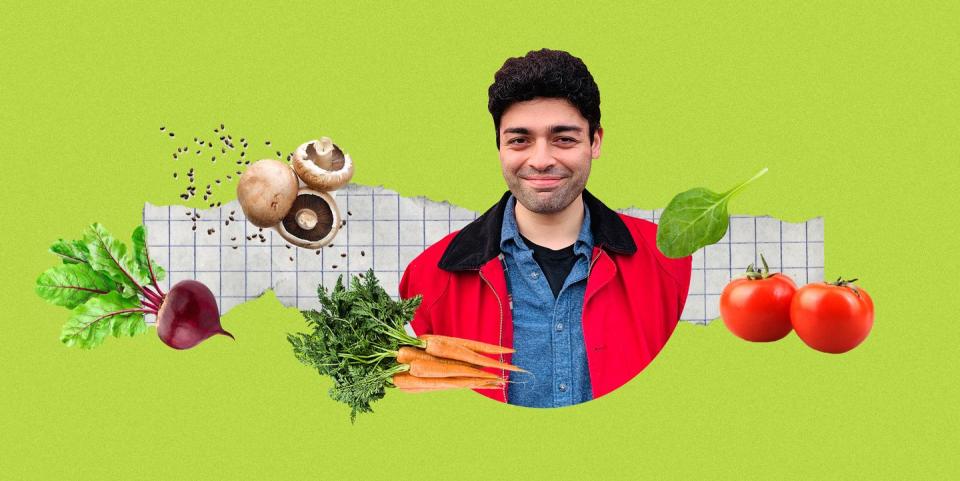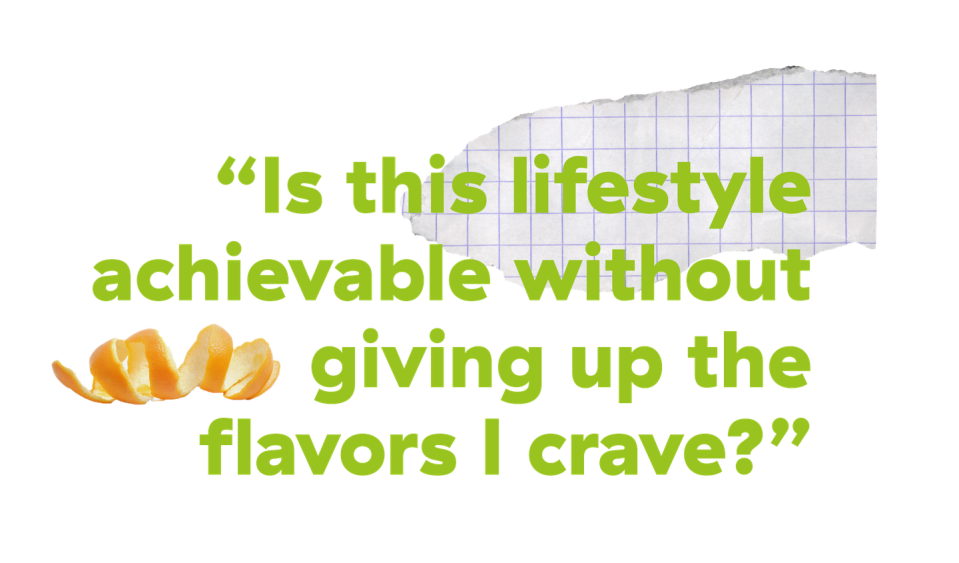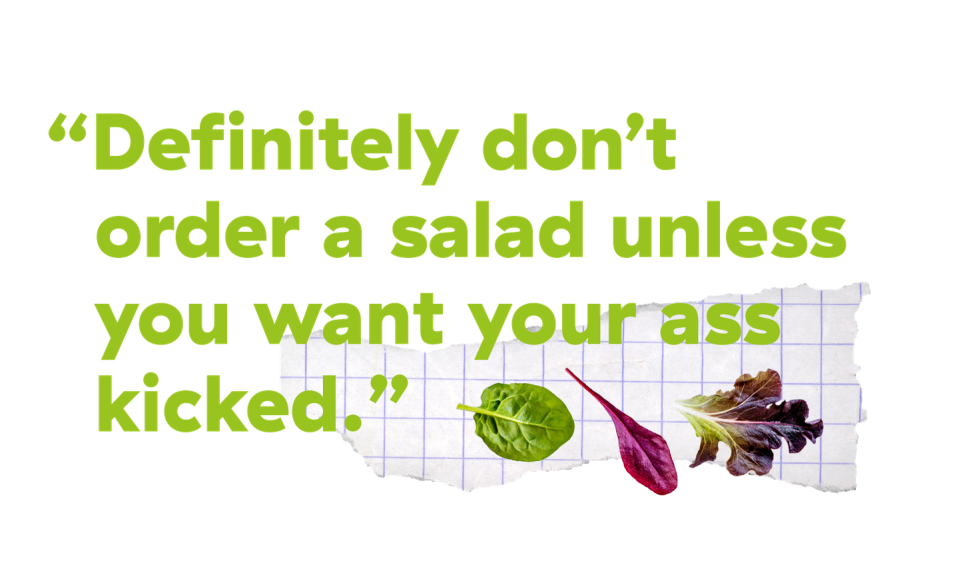What I've Learned From 10+ Years Of Trying To Avoid Meat

Growing up in a multiracial household, of Indian, Italian, and Puerto Rican descent, I was raised on tandoori kabobs with my naan, meatballs with my pasta, and pollo with my arroz. Vegetables were only featured on the side offering a facade of nutritional balance. Meat, however, always remained the centerpiece—the main event of each meal. Simply put, meat was the foundation of my diet.
In recent years, I’ve started to resent my dependency on meat. Watching Bong Joon-ho’s 2017 film Okja struck a nerve about how my food is being prepared, who’s producing it, and the impersonal stance our society takes on the treatment of animals. I realized how removed I actually was from the animals I was eating and felt a lack of compassion for nature altogether as I fooled myself into separating industrially-farmed animals from those who were allowed to roam free. I began to wonder if I even needed the flesh of an animal in my diet: Would it be possible to go a day without desiring it? How about a week? A month? A year? How about eliminating meat consumption altogether? Is this lifestyle achievable without giving up the flavors I crave?

Until the start of the Industrial Revolution, meat was a luxury for the wealthy and a rare delicacy for the working class in the United States. By the late 1800s, technological advancements sped up production exponentially as U.S. beef exports were totaling nearly 400 million pounds of beef and 671 million pounds of pork. By the turn of the century, meat became a presumed ingredient in the modern world’s daily repast.
Supermarkets and fast food chains have always been equipped to offer us any packaged or prepared livestock we demand. In many cases, dishes featuring meat are cheaper than non-carnivorous options (the exception being Indian restaurants). It makes perfect sense that vegetables have become viewed as disposable—an afterthought for the average American’s palate—while meat has been championed as a substantial feature worth our dime and our digestion.

Most restaurant menu items spotlight meat in its main courses; so much so that there are designated “vegetarian” options for less blood-thirsty, which may lead to fellow diners scoffing at you for choosing an alternative to what we perceive is the norm—and definitely don’t order a salad unless you want your ass kicked.
Why has eating chicken, fish, beef or pork become the standard rather than a rare delicacy? And is it possible to partake in too much? With a growing global meat production industry, not only are factories directly causing environmental destruction but more and more health reports are declaring that eating too much meat is only only unnecessary, but that it’s also bad for you.

In fact, meat consumption in the United States only continues to rise. In 2018, the United States Department of Agriculture estimated that Americans hit record meat-eating levels with an average of 222 pounds of red-meat and poultry per person. We’ve known for far longer that eating too much meat produces high-cholesterol which often leads to heart disease, causing over 600,000 deaths in the U.S. each year, and yet Americans still consume four times as much meat than any other country.
...You understand why I’ve started to wonder if it’s even possible to distance myself from meat options without terribly yearning for them.
And still, I’ve tried desperately to become a vegetarian for more than a decade in order to seek a healthier lifestyle and lower my carbon footprint. It hasn't been easy during family dinners; older relatives had a difficult time comprehending spaghetti without meatballs, habichuelas without pernil, or curry without chicken. Five years ago, my first attempt to go full vegetarian only lasted nine months and I gained twenty pounds in the process due to carb overload. My unwillingness to explore vegetable-focused options resulted in frozen dinners and too many carbohydrates. I wasn’t fully prepared to make vegetables actually taste good—I hadn't yet met my wife who soon helped me explore options within my own cultural backgrounds.
We learned to cook Indian food together, a cuisine that offers a variety of vegetarian dishes; from palak paneer (spinach curry with cheese curds) to chana masala (chickpea curry). Puerto Rican and Italian food presented some challenges, but we found replacements for meaty staples, like plátanos alongside rice and beans and eggplant on top of pasta and tomato sauce. Breakfast proved easiest—oatmeal filled me up and provided energy to start my day. Lunches became simplified. I began leaving sandwiches behind for salads, allowing creativity to mix in more vegetables like string beans to artichokes. Within months of being with her, I found myself losing weight and feeling less bloated, too.
Outside of the home, fast food junkies—myself included—are becoming more open-minded toward new meat substitutes entering the marketplace. It’s possible all of us are becoming eco-conscious (...or more concerned about our own wellbeing), or perhaps some are just curious what these new alternatives taste like. Either way, 95 percent of people who have purchased a plant-based burger in 2019 were also meat-eaters. This new, meatless industry is growing every year, with a 10 percent overall growth from the previous year. Major chains, including Burger King, are now providing plant-based options like the Impossible Whopper, making the possibility of vegetarianism more accessible to the general public.
Last week, I found myself taking out from a too-cool-for-school establishment. You know, the kind of place that values the idea of free-range fried cattle to ease their customers’ guilt. To my surprise, they were offering an in-house made Impossible Burger (but don’t tell the King). I viewed the new menu option as an opportunity to taste the hype and decide if I could really see a meatless future for myself both in and out of my home. I took a bite expecting a spongy consistency, but to my surprise, it was firm and moist, just like ground beef. After a few more bites, I truly couldn’t tell the difference.
Burgers aren’t an everyday meal for most, of course. Since the start of the pandemic, I’ve managed to limit my meat consumption significantly and once again become more creative in the kitchen out of necessity. I’ve discovered rich filling alternatives (see: cauliflower, Brussels sprouts, squash, and mushrooms), all of which easily fit into almost any cultural cuisine, whether it be a stir fry, a curry, a pie or a dish worthy of a barbecue. My wife and I have encouraged one another to experiment with new recipes and our limits have been pushed farther as a result. Last night, we attempted a homemade black bean burger. It was a little dense, sure, but it was also delicious and full of protein and fiber.
Raj Tawney is a writer in New York covering food, family and culture from his multiracial American perspective. Visit him at rajtawney.com
You Might Also Like

 Yahoo Finance
Yahoo Finance 